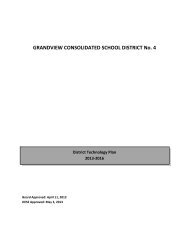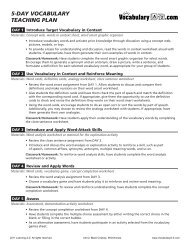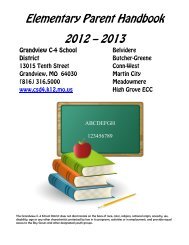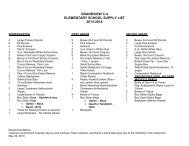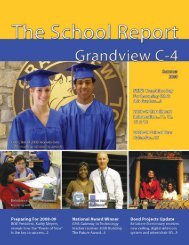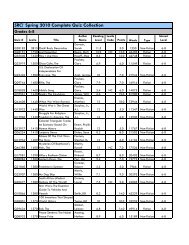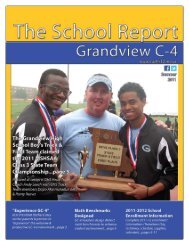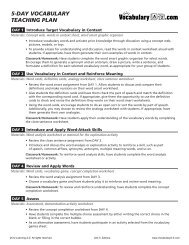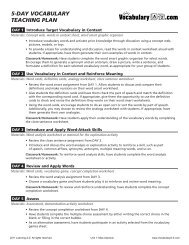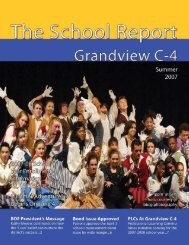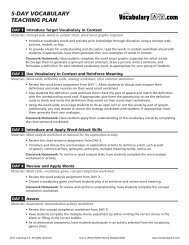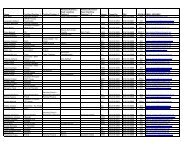Small Learning Communities Overview - Grandview C-4 Schools
Small Learning Communities Overview - Grandview C-4 Schools
Small Learning Communities Overview - Grandview C-4 Schools
- No tags were found...
Create successful ePaper yourself
Turn your PDF publications into a flip-book with our unique Google optimized e-Paper software.
SMALL LEARNINGCOMMUNITIES“Unleashing our potential throughrigor, relevance, andrelationships.”
What are small learningcommunities?•200 – 300 students per house•10 -15 teachers per house•Themes•Students stay with samecore/theme/advisory teachers all fouryears•Opportunity to acquire skills andknowledge for college and/or careers.
GHS <strong>Small</strong> <strong>Learning</strong> <strong>Communities</strong>• Engineering Manufacturing Technology• Arts and Communications• Health and Human Services• International Business Management
Guiding Principles for DevelopingThematic <strong>Small</strong> <strong>Learning</strong> <strong>Communities</strong>(SLCs)• Students and teachers stay together.• Students learn in mixed grades.• SLCs create identity and choice.• SLC staff collaborates around instruction andstudent outcomes.• SLCs have collective responsibilities.
Students and teachers stay together.• Students and staff in each SLC stay together throughmost of the day.• During the freshman and sophomore year students take75% of their classes with teachers affiliated with theSLC.• Beginning their junior students begin to take moreclasses outside of the SLC in the elective lane. Theamount of time spent outside of the SLC should bedependent on individual student need.• The power of the SLC is based on the relationships thatdevelop between teachers and students and betweenstudents and students during their high school career.
Students learn in mixed grades.•Mixed-grade communities make it possibleto group students and offer instructionalprograms based on individual academicneeds and interests rather than just gradelevels.•They create opportunities for olderstudents to serve as mentors to youngerstudents.
SLCs create identity and choice.•All <strong>Small</strong> <strong>Learning</strong> <strong>Communities</strong> gain theiridentities from themes such as visual andperforming arts, business, and scienceand technology.•Themes should be developed to engagestudents and provide them with a broadunderstanding of the career or interestarea that the students have chosen.
SLC staff collaborates aroundinstruction and outcomes.• Teaching staff in every SLC meet at least threehours weekly without students so that they canreview their students’ progress, shareexperiences using new teaching techniques andactivities that engage students and help themmeet high standards.• This time for collaboration supports SLCs inimproving their instruction and their students’performance.
SLCs have collective responsibility.• Students, families and school staff in anSLC share responsibility for studentoutcomes.• SLCs set annual targets for students’behavioral and academic achievement,develop action plans to ensure the targetsare reached and review progressthroughout the year.



